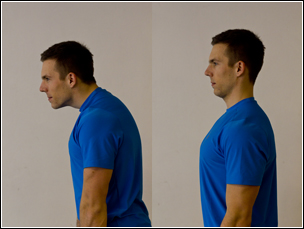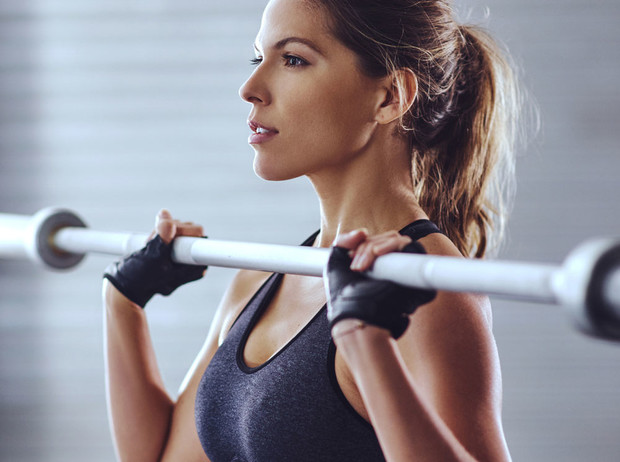This point really cannot be ignored. Everything, including training (what style to direct it, how to start, what to do and not to do), depends on the state of health.
Unfortunately, a large number of people neglect it, and then even out of unimportant details, big problems arise.
An ideal case before starting sports after a long time, or starting sports for the first time, should be a visit to a sports doctor, who will examine you in detail. This examination costs several hundred crowns, but it is a minimal investment to make sure that you do not mess something right at the beginning.
If you suffer from a problem, whether physical or other, it is always good to consult the change of sports with the appropriate expert – he should tell you exactly whether it is appropriate or not, and if what style to adjust the character of the sport.
If you do not suffer from any problems, you do not have regular pain and there is nothing to stop you from starting training, as well as you need to evaluate another important component of health – proper posture. Because be sure that if you have had a passive relationship with sports for some time, some posture has manifested itself. And this is the direct reason why health problems in the musculoskeletal system can develop.
Priorities – goal vs. health
What is your goal? Want to have a big biceps? Do you want to lift 200 kg per bench? Do you want to run a marathon in less than three hours?
All these and other similar goals can be called goals that a person is primarily focused on, that pushes him forward. It is a final, long-term goal.
But what a really small part of such newly determined people see are important goals, important from a health point of view, short-term goals. It is important to address these goals primarily before we start lifting a large barbell, before we start running huge volumes of kilometers every day.
The path to our dream goal must always be to some extent a compromise between what we really want and what we need.
Simply put, if a thin, crooked guy decides that he wants to have a circumference of 50 cm across his biceps, he cannot immediately begin biceps strokes and gradually only increase the load. He must first concentrate his efforts on improving posture, strengthening the center of the body and gradually increasing the load, with the other parts being already adapted to the added weight.
Yes, it may seem that this journey will be slower, but you will save yourself any future problems and even the huge biceps looks better on a nicely built and untwisted body.
Important points that one must gradually learn in order to move on
In the following points, I would like to approach the sequence that one must work with before working one on, for example, the great biceps:
- Correct body posture
- The right breathing stereotype
- Ideal flexibility and mobility, ranges in the joints
- The correct technique of basic positions and exercises without load
- Gradual removal of support points – creating a more demanding, unstable environment / adding load
- Total intensification – more series, more training, shorter rest…
The first three indents could often be included in point one.
If we imagine, for example, a lunge – it is one of the basic strengths of developing exercises of the lower limbs, but it is also an exercise demanding flexibility, coordination, etc.
The individual components can never be completely separated. As soon as we learn the correct posture, we actively engage and thus strengthen certain muscle groups, and vice versa.
In terms of training skills, the same methodological series should be as follows:
- Core training, development of stability, coordination, flexibility, mobility
- Basic development of strength skills
- Development of specific abilities – strength, speed, endurance, explosiveness, strength endurance, coordination
- Performance – only in the last place is the specific training of the sport
Here it is generally more about sports training characteristic of various sports, but also for fitness, bodybuilding and strength sports, we can take our own – we always need to plan training from general development to the final specific elements.
Correct body posture
Today, we will focus even more specifically on this point. If you ensure the correct position of our body and you do the same during exercise, you usually have completely won.
 If the body is set up correctly, it usually naturally involves the deep stabilizing muscles, thanks to which the breathing stereotype is adjusted in the right direction, and one should also maintain the correct technique during the exercise itself.
If the body is set up correctly, it usually naturally involves the deep stabilizing muscles, thanks to which the breathing stereotype is adjusted in the right direction, and one should also maintain the correct technique during the exercise itself.
Therefore, proper posture is the alpha and omega of any fitness start. For aesthetic purposes only – a person with poor posture can, for example, have a large abdomen due to excessive lumbar lordosis, and only improving posture will change the appearance of the body a lot.
In the exercise itself, we should always focus on a few specific parts of our body, which must always be set up correctly in relation to the others. These are the five main points that should, to some extent, ensure the correct adjustment of other parts of the body:
- Feet (from ankle down)
- Knees
- Basin area
- Shoulders
- Head
We should always focus on these 5 points and be sure that they are built as they should be. You don’t have to worry about constant concentration – over time, posture should automate just as automated posture is defective.
Comparison standing in the right position
Always start from the ground, because just leveling your legs will usually level everything else to an almost ideal position.
Start each workout by stabilizing into the right posture and focus on it – it’s a minute of your time and it will improve your perception of your own body throughout the workout.
In the same way, this ends the training, so that after relaxation and stretching, you do not really go to the locker room for relaxation – “falling into a pile”.
We will repeat the points of correct posture discussed several times:
- The feet are the width of the hips, horizontal, with the index fingers pointing forward.
- Knees in slight flexion – the joint will never be stretched (locked).
- The hip joint is straight – we pull ourselves up, “we don’t sit in it”.
- Pan in neutral position – do not plant or plant!
- Back naturally curved, we do not try to balance lordosis and kyphosis, we alleviate them only in hyperlordotic / kyphotic posture.
- We try to keep the chest in the exhalation position – with the exhalation we pull the lower ribs, not the abdomen, thus simply activating the transverse abdominal muscle (m. Transversus abdominis).
- We stretch the shoulders and shoulder blades to the sides and down, trying to loosen the upper part of the trapezoids.
- On the contrary, we pull the head out of the body, in the axis of the spine, we insert the chin slightly.
Deliberately give it a try – stand up naturally and realize the mistakes you are making. Then stand up again and start to stand straight from the feet, which you load evenly, stand in the right width, in the right direction, and now check that the other ailments that were characteristic of you before you have at least slightly corrected.

